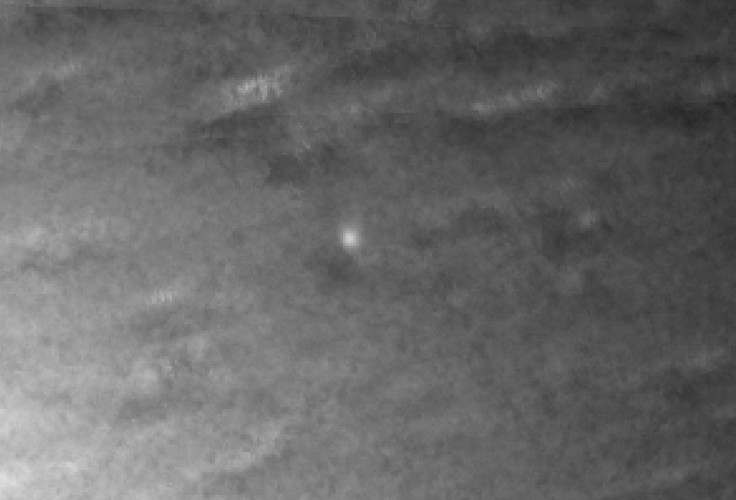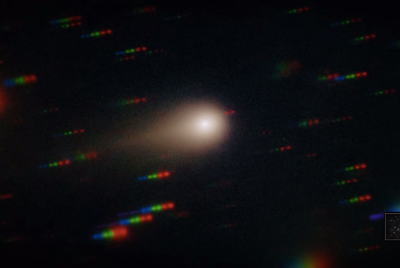3I/ATLAS 'Fallout' Eyed As 'Debris' Strands 6 Chinese Astronauts
Is debris 'fallout' from 3I/ATLAS responsible for stranding 6 Chinese astronauts on Tiangong? China's silence fuels a space crisis.

As the world watches interstellar object 3I/ATLAS light up the solar system, a new high-stakes crisis is unfolding in Earth's orbit. Six Chinese astronauts are currently sheltering aboard the Tiangong space station—double its usual capacity—after their Shenzhou-20 return craft was damaged by an unidentified high-velocity impact last week.
While Chinese officials insist the crew is 'safe and working normally', their complete silence on the incident is fuelling intense speculation. Beijing has released no images of the damage, no telemetry data, and no orbital debris identification.
This secrecy comes at a time when 3I/ATLAS is making the near-Earth environment more volatile than at any point in recent history, leading many to question if the two events are connected. Specifically, analysts are now examining whether 'fallout' or debris from the passing object could be directly responsible for the strike.

The Volatile Environment Created by 3I/ATLAS
The timing of the Tiangong strike is, at minimum, deeply suspicious. 3I/ATLAS is not a passive visitor. As it neared perihelion, the object brightened by orders of magnitude, began shedding significant mass, and produced bizarre 'anti-tail jets'.
This 'fallout', a trail of high-velocity dust and potential fragments, now litters the interplanetary space through which Earth is passing. These are the same structures that led Harvard astrophysicist Avi Loeb to call the object's behaviour 'one-in-100-million unlikely to be natural'.
This activity, combined with a recent sequence of intense solar flares, has bombarded near-Earth space with radiation and electromagnetic disturbances. The damaged Shenzhou-20 passed directly through this changed dynamical environment.
Experts say the possibility that a fragment from 3I/ATLAS (part of this debris trail) or a flare-energised particle stream contributed to the strike is not far-fetched. Without data from China, they simply do not know.

China's Silence Amidst the 3I/ATLAS Questions
This lack of transparency stands in stark contrast to a previous ISS incident, where physicists could track coolant particles and model a leak in near real time. China's refusal to share basic facts (like the impact's vector or any metallurgical analysis of the strike site) is amplifying rumours and preventing independent analysis of the 3I/ATLAS debris theory.
This is particularly troubling as the global spaceflight community remains on high alert. The world is collectively waiting for the December 19 Earth-approach test that will finally reveal whether the behaviour of 3I/ATLAS is natural or non-natural.
When an object's mysterious activity and debris shed aligns so closely with serious spacecraft damage, experts argue governments should release more information, not less.
A Rescue Dilemma and the Looming 3I/ATLAS Approach
China's immediate plan is to use a backup capsule, Shenzhou-21, to retrieve the stranded Shenzhou-20 crew. However, this creates a domino-effect crisis: the Shenzhou-21 astronauts, who were meant to use that capsule for their own mission, will then be left without a ride home until a replacement can be launched.
While analysts expect Beijing to attempt a rapid new launch (a mission that must itself fly through the same potentially debris-filled environment), the orbital windows are narrow and the pressure is enormous. This highlights an uncomfortable truth: the only proven rapid-response rescue capability in spaceflight today belongs to Elon Musk.
SpaceX's Dragon capsule is the only spacecraft with the demonstrated flexibility to perform an emergency rendezvous under the intense radiation and debris conditions now present. If the damage to Shenzhou-20 is worse than admitted, Beijing may be forced to ask for help from the one player with a documented record of pulling astronauts out of harm's way.
What's Next for Tiangong and the 3I/ATLAS Test
For now, Chinese officials insist that 'all work is progressing steadily'. This is the same phrase NASA used in the early days of the ISS leak, before memos acknowledged the crew could not safely return in their original capsule. Tiangong was not designed to indefinitely shelter six people without a fully validated return plan.
China is expected to announce its Shenzhou-21 rescue plan within days. Meanwhile, the world watches and waits for December 19. As the 3I/ATLAS mystery and the Tiangong crisis converge, one thing has become clear: whether from this object or not, the space environment is now a shared risk, and transparency is what saves lives.
With six astronauts stranded in orbit and a rescue mission forced to navigate the same potentially hazardous debris field, China's silence is becoming as dangerous as the impact itself. Is the Shenzhou-20 strike a random accident, or the first 'fallout' from the mysterious 3I/ATLAS? The world waits for answers, both from Beijing and from the object's upcoming December 19 Earth-approach.
© Copyright IBTimes 2025. All rights reserved.




















